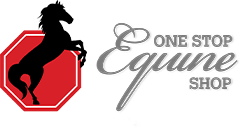Sizing a bit is relatively straightforward. The bit is measured from the inside of one bit ring to the inside of the other. In the diagram, you can see where to measure, in inches, the size of the bit. Bits are available in quarter inch increments. It is important to get the most accurate and compatible size to maximize comfort for your horse.
How To Know What Size Your Horse Needs
Try a few of bits on - borrow a couple bits, of various sizes, from friends to check the fit in your horses’ mouth. When a bit width fits properly, the corners of the horses’ mouth should be comfortable, with a small amount of room on either side. The lips should be loose with no pinching, and should have a one or two wrinkle ‘smile’ of soft skin. A bit that is too big will have excess room on the mouthpiece. This interferes with ideal communication, as the bit will always slide back and forth through the mouth, which can be irritating and unsettling. It will also work more on the bars of the mouth than it is designed to do. The photo below shows a bit that is too big. There is almost no ‘smile’ at the corners of the mouth. A bit that is too small will cause the skin at the corners of the mouth to be taught and pinched. This will almost certainly result in a horse that tosses his head or rubs to try to alleviate the discomfort and pressure. The corners of the mouth will often get rubs and sores. If the bit has to be something other than the perfect fit for your horse, it is better to be a little big than too small!
Think about Thickness!
Thicker bits are typically milder for your horse, but there is such a thing as too thick! The bit should rest comfortably in the mouth, and not be so thick that the horse envelops his lips around it awkwardly. Thin bits, or twisted bits, like the Korsteel Twisted Wire Big Dee Snaffle are more severe and should be used with caution. Tactfully used, they can help correct a horse that pulls down. The thinner the bit, the more it is at risk of cutting into the bars of the horses’ mouth, and the corners, as well as applying pressure on the tongue, depending on the mouthpiece type. Beginner riders should not use thin bits. They are not independent with their rein aids, and can inadvertently pull or damage a horses’ mouth.
Type of Metal or Material Can Make a Difference!
Most bits are made of stainless steel, an alloy of iron, with at least a 10.5-12% chromium content. It is known for it’s durability and non-corrosive properties. It is neutral in taste and odor. Some horses like the warmer feel of a copper bit, like the Korsteel Copper Mouth Barrel Dee Snaffle, that oxidizes in their mouth to encourage salivation, and gives off a tart taste. The problem with copper is that it is a softer metal, so the bit will be subject to damage from the horses’ teeth. Bits with a central copper link, such as the Shires Hunter Dee With Copper Lozenge, have the best of both worlds! There are rubber and plastic covered bits that are often preferred by a horse with a sensitive mouth, or that has had recurring dental problems. For example, the Shires Rubber-Covered Jointed Eggbutt is a stainless steel bit with a rubber covering over the mouthpiece, where it acts on the bars and corners of the horses’ mouth. There are also bits like the Korsteel Solid Rubber Mouth Loose Ring Snaffle that have no metal structure under the rubber, giving flexibility to the feel of the bit, but not having the durability of a metal bit underneath. Additionally, innovative alloys like German Silver (an alloy of nickel, zinc, and copper), that combine benefits of different metals in a manner that is pleasing in taste and feel for the horse, are used in bit construction.
Weight of the Bit Should Be Considered!
There are hollow mouth snaffles that are very light for the horse to carry. Some horses will prefer the lightness and freedom that comes with a loose ring hollow mouth, like the Shires Hollow Mouth Eggbutt, while others will toss their head, play, and fuss more. These horses often like the substance and feel of a solid mouth bit, to settle and hold steady on, and maybe even a heavyweight bit such as the Korsteel Heavyweight Solid Mouth Eggbutt.
How to Fit a Curb Chain on a Leverage Bit
Leverage bits, such as the Kimberwick and Pelham, have curb chains that assist in the proper, intended action of the bit. It is important to know how to adjust these when sizing a bit for your horse. A properly adjusted curb chain will start to be activated when the bit cheeks are rotated 45 degrees. When the bit is in the horses’ mouth, you must rotate the bit cheeks to this 45 degree angle, turning the lower shanks, or portion, towards the horses’ tail, as if you were applying rein pressure from his back. The curb chain should be linked to the J-hooks with an even tautness at this angle. Contrary to common belief, too loose of a curb chain is not softer or milder for the horse. What the curb chain does is control the amount of rotation the mouthpiece has in the mouth. If the chain is too loose, the bit over-rotates in the horses’ mouth. If the curb chain is too tight, it impedes the favorable rotation of the bit when rein pressure is applied, as well as exerts constant pressure and discomfort to the horse.

